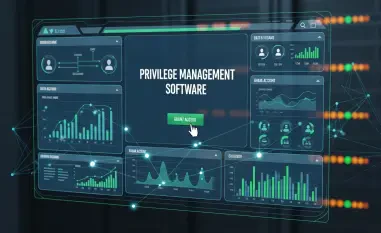In the ever-evolving realm of cybersecurity, password spraying has emerged as a formidable threat. This technique employs sophistication by targeting numerous accounts with a small set of common passwords, distinguishing itself from traditional brute-force attacks. While brute-force methods bombard one account with vast attempts, password spraying stealthily breaches multiple accounts, thereby mitigating the risk of triggering security lockouts. Recent incidents involving leading companies such as Cisco and Microsoft underscore the technique’s effectiveness, signaling a pressing need for fortified defenses across the digital landscape.
The Rise and Impact of Password Spraying
High-Profile Cases and Their Implications
Over the past few years, high-profile organizations have seen firsthand the damaging effects of password spraying. Notable cases involving giants like Cisco and Microsoft reveal detailed insights into the attack methods, shedding light on the evolving sophistication of cybercriminals. Cisco’s Secure Firewall VPN and Microsoft 365 accounts have particularly struggled due to inherent vulnerabilities, emphasizing the universal threat posed by spraying techniques. These incidents illustrate that even companies with substantial cybersecurity measures are not impervious to attacks. They also underline a growing necessity for organizations to remain vigilant and updated on defense strategies that can counteract such attempts efficiently.
Active Directory systems have emerged as primary targets in password spraying campaigns. This is largely because Active Directory’s architecture is prevalent in enterprise settings, where systems are interlinked, making a successful attack on one account potentially detrimental to the entire network. Additionally, Active Directory’s Lightweight Directory Access Protocol (LDAP) can be exploited, particularly when weak or recycled passwords are in use. Furthermore, the existence of service or administrative accounts that often circumvent lockout policies adds another layer of vulnerability. It allows attackers to perpetually attempt logins without significant detection, depicting a glaring security gap that necessitates immediate action.
Differentiating from Brute-Force Attacks
Password spraying distinguishably deviates from brute-force methods, chiefly through its stealthy approach. By spacing out login attempts, attackers reduce the likelihood of triggering detection systems typically designed to monitor repeated failures from a single IP or account. This strategic pacing means attackers can cover more ground without being detected, especially in environments that lack robust password and security policies. Poorly configured systems offering default password options or failing to employ continuous monitoring are often the most susceptible targets. Unlike brute-force attacks, which can rapidly expose their presence, spraying attacks can persist undetected, making their identification and prevention more challenging.
Dedicated tools like CrackMapExec (CME) and Kerbrute have been specifically engineered to exploit vulnerabilities in Active Directory environments. By automating the spraying process, these tools make it accessible even to less technologically adept attackers, amplifying the threat. Once intruders gain a foothold in the system, they can seize the opportunity to move laterally, gaining access to more valuable and sensitive assets. This lateral movement within networks can escalate the severity of the impact, leading to significant data breaches or disruption of critical operations. Understanding these dynamics is crucial for developing comprehensive protection measures.
Anatomy and Techniques of Password Spraying Attacks
Studying the Step-by-Step Approach
A password spraying attack typically begins with meticulous reconnaissance. Attackers compile lists of potential usernames, often sourced from public directories or databases compromised in previous breaches and available on the Dark Web. Armed with this information, they identify a small pool of frequently used passwords, often derived from data breach disclosures. Attackers then use automated scripts designed to throttle attempts strategically, allowing them to test numerous logins without raising red flags. The objective is to compromise an account successfully, which then serves as a valuable entry point for further exploitation of the network, including data theft and malware deployment.
Once access is achieved, attackers prioritize stealth to maintain prolonged infiltration. They might exploit this access to extract sensitive information or establish a foundation for future attacks like phishing campaigns or distributing malicious software. They employ various evasion tactics such as log deletion or encryption to mask their activities, striving to remain undetected for as long as possible. This capability to erase footprints and ensure operational continuity without immediate detection significantly amplifies the threat posed by password spraying. These methods, when effectively executed, can severely compromise the security integrity of an organization’s IT infrastructure.
Vulnerabilities and Mitigation Strategies
The driving force behind successful password spraying is often weak password protocols, coupled with the use of compromised passwords. Organizations frequently underestimate the importance of password hygiene, focusing on complexity rather than ensuring passwords are unique and regularly updated. To counteract this, several preventive strategies can be implemented. For instance, introducing smart lockout policies that adapt to differing attack patterns can effectively block suspicious activities without causing inconvenience to legitimate users. Multifactor authentication (MFA) adds another layer of security, requiring additional verifications that password spraying alone cannot bypass.
Another crucial aspect of defense is enforcing stringent password policies, requiring strong credentials that are scrutinized against known compromised lists. Consolidating logs using a security information and event management (SIEM) system enables real-time monitoring and alerts for unusual login behaviors, enabling rapid reaction to potential breaches. Additionally, it is recommended to disable obsolete protocols like NTLM, restricting Remote Desktop Protocol (RDP) to controlled environments to significantly minimize opportunities for unauthorized access. These approaches collectively form a robust strategy against password spraying, diminishing the operational capacity of attackers.
Towards Comprehensive Organizational Security
Actionable Steps for IT Administrators
For IT administrators, building a comprehensive security framework to deter password spraying attacks is akin to establishing a fortress. First and foremost, adopting password management tools ensures policies are consistently enforced, simplifying the process of strengthening password protocols across an organization. Active monitoring of Active Directory environments is essential in identifying potential vulnerabilities before they are exploited. Proactive measures, such as implementing automatic alerts for unusual activity or unauthorized attempts, foster a more resilient security posture. These strategies not only promise immediate protection but also prepare organizations for adaptive and innovative attack methods.
Combining robust multifactor authentication, vigilant monitoring, and thorough risk assessments can create a strong defense against the threats posed by password spraying. Ensuring seamless communication between IT professionals and other organizational departments fosters awareness and adherence to best practices, promoting a holistic approach to threat management. Additionally, regular training and awareness sessions help employees recognize potential phishing tactics or suspicious activities, acting as the first line of defense. Such a multifaceted approach bolsters an organization’s resilience to evolving cybersecurity threats, ensuring that critical IT infrastructures remain secure.
Future Considerations and Emerging Trends
In today’s fast-paced world of cybersecurity, password spraying has become a significant threat that can’t be ignored. This method, which is more refined compared to traditional brute-force attacks, focuses on attacking many accounts using a few widely-used passwords. Unlike brute-force techniques that flood one account with multiple password attempts, password spraying targets several accounts. This approach reduces the chance of being detected and setting off security protocols like account lockouts. It poses a clever challenge to traditional defense mechanisms. The effectiveness of this strategy has been highlighted by recent breaches involving tech giants like Cisco and Microsoft. These incidents serve as a wake-up call for companies worldwide, stressing the urgent necessity for robust, improved security measures. Password spraying emphasizes a shift in how cybercriminals operate, and companies must adapt by implementing stronger security practices, such as multi-factor authentication, robust monitoring, and user education to shield themselves against these evolving threats.













